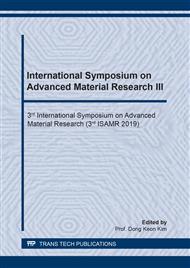p.3
p.10
p.15
p.20
p.27
p.33
p.39
p.47
Comparative Analysis of Windy Accumulated Sands by Heavy-Typed Compaction and Surface Vibration Compression Method of Desert Areas in China
Abstract:
Windy accumulated sand samples are collected in the main desert (Sandy land) in China, they are carried out the comparative tests by heavy-typed compaction and surface vibrated compression method. The results show that the effect of surface vibrated compression is stronger than that of heavy-typed compaction in general, especially when the water content is approaching to 0 or the saturation state, the former is greater than the latter by about 1g/ cm3; When the water content is about ranging from 1 % to 5 %, the former is still mostly higher than the latter, yet not much and the most is under 0.3 g/ cm3, even the former is slightly lower than the latter sometimes; When the water content is within other intervals, it shows a transitional situation. The main reason is the influence of false cohesion arising from the capillary water. In view of this, when determining the compression standard (maximum dry density) for the construction of wind-accumulated sand base, the surface vibrated compression method should be adopted, especially when it is dry compression or full water compression.
Info:
Periodical:
Pages:
3-9
Citation:
Online since:
April 2020
Authors:
Price:
Сopyright:
© 2020 Trans Tech Publications Ltd. All Rights Reserved
Share:
Citation:


